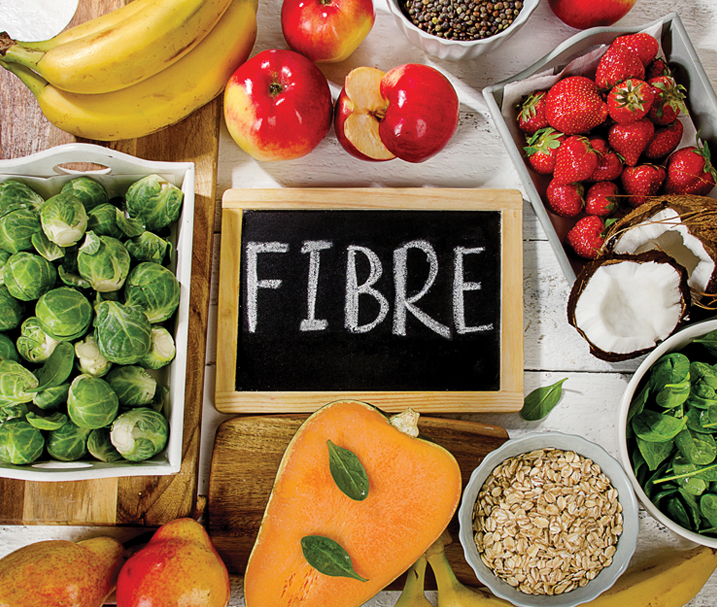
Dietary fibre, also known as roughage, is the indigestible part of plant foods that travels through our digestive system, absorbing water along the way and easing bowel movements. It refers to nutrients in the diet that are not digested by gastrointestinal enzymes. Fibre consists of non-starch polysaccharides, such as cellulose, dextrins, inulin, lignin, chitins, pectins, beta-glucans, waxes, and oligosaccharides.
There are two broad types of fibre: Soluble and insoluble.
• Soluble fibre dissolves in water. It changes as it goes through the digestive tract where it is fermented by bacteria. As it absorbs water, it becomes gelatinous.
• Insoluble fibre does not dissolve in water. As it goes through the digestive tract, it does not change its form. It can also be fermented by bacteria in the colon.
• Foods that contain dietary fibre are generally divided into predominantly soluble or insoluble; both types of fibre are present in all plant foods, but rarely in equal proportions. Both forms of fibre have major health benefits. Soluble fibre binds with fatty acids, it slows down the time it takes to empty the stomach and the rate of sugar absorption by the body.
Benefits of soluble fibre:
• Reduces cholesterol, especially levels of LDL (bad cholesterol).
• Regulates sugar intake, this is especially useful for people with diabetes and metabolic syndrome.
• Soluble fibre is fermented by gut bacteria, improving immune, digestive, and overall health. Good sources of soluble fibre include kidney beans, pinto beans, Brussels sprouts, broccoli, spinach, zucchini, apples, oranges, grapefruit, grapes, prunes, oatmeal, and whole-wheat bread. Insoluble fibres have many functions, including moving bulk through the digestive tract and controlling pH (acidity) levels in the intestines.
Benefits of insoluble fibre:
• Promotes regular bowel movements and prevents constipation.
• Speeds up the elimination of waste through the colon.
• By keeping an optimal pH in the intestines, insoluble fibre helps prevent microbes from producing substances which can lead to colorectal cancer. Food sources of insoluble fibre include vegetables — especially dark green leafy ones, root vegetable skins, fruit skins, whole wheat products, wheat bran, corn bran, nuts, and seeds. Most high-fibre foods usually have insoluble and soluble fibre. Oat, oat brans, psyllium husk, and flaxseed are rich in both types of fibres.
Consuming 25 grams of fibre each day should be enough to meet daily requirements. Ideally, individuals should consume at least five servings of fruit and vegetables, as well as some servings of whole grain products, each day. A high-fibre intake can significantly contribute towards body-weight control. Fibre produces a feeling of fullness without adding calories (fibre calories are not absorbed by the body) — this can help treat or prevent overweight and obesity.
Most foods that are high in fibre are also very healthy like fruits, vegetables, and whole grains which are high in fibre are also rich in vitamins and other essential nutrients. In other words, eating a high-fibre diet protects health through both the intake of fibre and other essential nutrients.
— Jishy Seby is diet consultant at Kims Oman Hospital